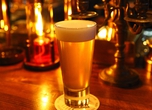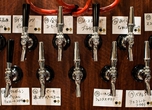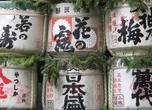
Posted: Tue Apr 01 2014
You’re looking to have a good time without splurging on a bar night, and have made your way down to the local convenience store to pick up a couple of cold ones. A dilemma emerges: you’re spoilt for choice. On top of the numerous regular beers, you’ve got a shelf full of cheaper but suspicious faux beers. These posers are known as happoshu, a kind of malt liquor created by ever-resourceful Japanese breweries for tax-evasion purposes (drinks with less than 67 percent malt content are not classified as beer, and are thus more leniently taxed). So, which will make your night in worthwhile? We've done the research, putting four happoshu and three real beers to the test, and choosing one winner...
The faux beer (happoshu)
Nodogoshi Nama ★☆☆☆☆
Known as the eternal favourite of Tokyo street-dwellers, the stupefyingly watery Nodogoshi features an unfortunately juice-like flavour and a hint of industrial metal in the aftertaste. An ocean of grey mediocrity; a weak showing on every level.
Kirin Sumikiri ★★☆☆☆
The slightly sweet and noticeably bitter Sumikiri isn’t the worst choice out there, but the utter lack of character makes it difficult to recommend. The can’s deep silver colour and stylish design promised so much more…
Kinmugi ★★★☆☆
Fresh, almost flowery, this highly food-compatible fellow goes down effortlessly. The only happoshu here that can compete with actual beers. Exudes an exciting smell of petrol when poured – can’t be healthy, but who are we kidding here anyway?
Mugi & Hop ★☆☆☆☆
‘It’s beer to me’ – the advert slogan for this golden goon doesn’t exactly invoke confidence, and the soapy taste confirms all doubts. Then there's the brutally bitter aftertaste that reveals a mysterious, coriander-like smell. It’ll never be beer to me.
The real beer
Asahi Super Dry ★★☆☆☆
Japan’s best-selling beer was introduced in 1987 as a brew that would complement any meal and it promptly started a craze for dry beer. It's unabashedly neutral, except for the ickily lingering kick. Dry, sure, but less in terms of taste than in attitude – picture an immigration clerk or an NHK news presenter.
Orion ★★★☆☆
Okinawa’s contribution to the world of mediocre beverages starts off strong with its harmonious combo of kick and softness, but fizzles out pretty quickly with a disappointingly flat aftertaste. It can only be recommended as a sidekick to some bitter goya champuru.
Kirin Lager ★★★★☆
The sweet but unmistakably malty smell is promising and this honest, no-frills lager delivers. The ultimate cheap beer – nothing fancy, and a taste that remains utterly unchanged from the first sip to the ninth can of the night. Approval granted to one of Japan's oldest beer brands.
This article appears in the second issue of Time Out Tokyo magazine, out now.
Tweets
- About Us |
- Work for Time Out |
- Send us info |
- Advertising |
- Mobile edition |
- Terms & Conditions |
- Privacy policy |
- Contact Us
Copyright © 2014 Time Out Tokyo














Add your comment